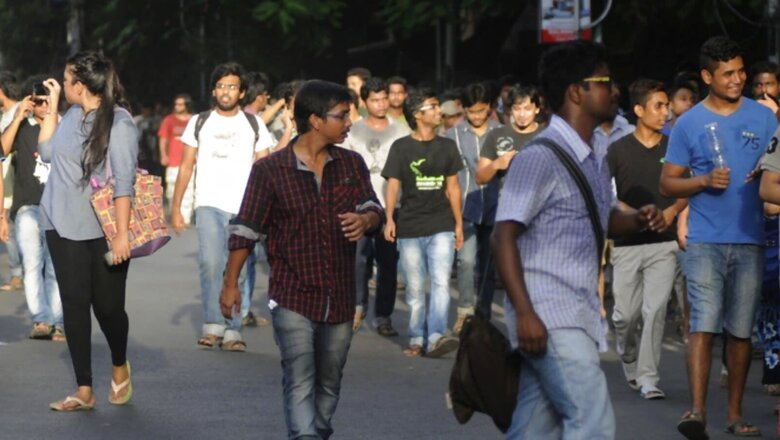
views
The adult literacy rate in India at 81 per cent which is lower than the world average of 86. The employability of engineering graduates is reported to be as low as 20 percent. The employability of others including management graduates too is a big concern. Election manifestos promise millions of jobs but millions remain unemployed. Did the successive governments allocate inadequate resources for educating their people? Should the Union Budget be blamed?
Live Updates: Budget 2022 LIVE Updates: Will FM Listen to your Mann Ki Baat and Rejig Income Tax Slab?
The National Education Policy (NEP) 1968 recommended spending of 6 per cent of GDP on education. The NEP 2020 also recommends the same. Now, 6 per cent of GDP translates to a spend of about Rs 14 lakh crore considering the estimated nominal GDP of Rs 232.15 lakh crore for 2021-22. The last Union budget saw an allocation of around Rs 93,224 crore for education. The combined budget allocation of 25 major states in the country during 2021-22 comes out to be Rs 6.11 lakh crore. This is just about 50 per cent of the recommended amount. Who should fund this gap?
Can Centre Fund the Budget Gap?
States have not been allocating funds in proportion to the NEP 2020 recommendation of 6 per cent of the GDP. The centre has set the expenditure target through the NEP, but the expenditure is to be largely met by the states. This looks a little ambiguous but that’s how it is. The centre doesn’t own any GDP. A nation’s GDP is nothing other than the sum of the states’ GDP. So each state has to spend around 6 per cent of its Gross State Domestic Product (GSDP) and the Centre can pitch in with its contribution as required.
Back of the envelope calculations show that around 16 per cent states spend less than 2 per cent of the GSDP, 36 per cent spend between 2-3 per cent, 20 per cent spend between 3-4, 8 per cent between 4-5 per cent, and 12 per cent between 5-6 per cent. Only two states Bihar and Tripura spend more than 6 per cent of the GSDP on education.
The centre does not have the resources to meet such a huge gap. A spend of Rs 6.11 lakh crore by states leaves around Rs 8 lakh crores to be spent by the centre to meet the Rs 14 lakh crore target. Union budget 2021-22 shows total receipts expected as Rs 19.76 lakh crore. Out of this, deduct interest payment cost of Rs 8.09 lakh crore and one is left with Rs 11.67 lakh crore. If the centre spends Rs 8 lakh crore on education, then a mere Rs 3.67 lakh crore is left to be spent on the country’s defence, electricity, transport, health services, agriculture, etc.
Every sector expects substantially higher allocation in the centre’s budget, but the resources are limited. How much can the country borrow to allocate more to these sectors?
Each state government is promising to provide smartphones tabs or laptops to students. UP government has begun with Digi Shakti Portal and Digi Shakti Adhyayan App. Such initiatives of states need to be encouraged through budgetary support from centre in creating good quality content for the users.
Edtech revolution
There is an edtech revolution in the country. NEP 2020 also encourages a symbiotic relationship between edtech service providers with the traditional schools and universities. The pandemic helped edtech grow and in turn, it enabled learning through social distancing. Though GST comes under the purview of the GST council, the budget can help these companies to be considered at par with traditional education providers. Lower than 18 per cent GST will benefit learners.
The credit growth in India (YoY) on December 2021 is 6.6 per cent. It has remained considerably low for quite some time. The finance minister should take this opportunity to provide interest subsidies to seekers of education loans. The step will improve credit growth, the profitability of banks, and more learning for the people. The subsidy should be available to the seekers of loans for education through edtech companies.
— Authored by Prof VP Singh, Professor of Economics & PGDM Program Director, Great Lakes Institute of Management, Gurgaon
Read all the Latest Education News here


















Comments
0 comment